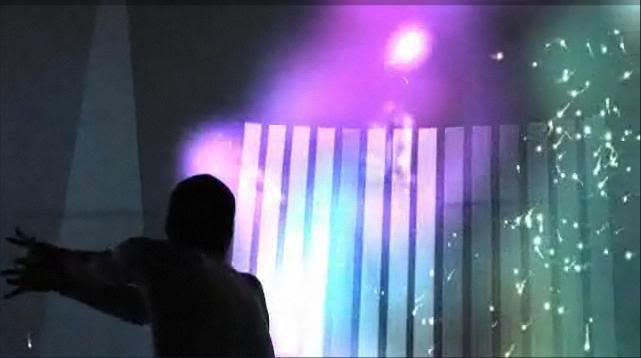In Search of the Gesamtkunstwerk Experience: YMYI
This is another example of new technologies evolving the idea of Gesamtkunstwerk.
In Search of the Gesamtkunstwerk Experience: EXYZT
Boom Box project:
With Etinne De Crecy:
In Search of the Gesamtkunstwerk Experience:
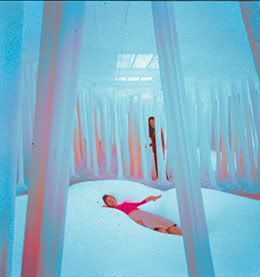
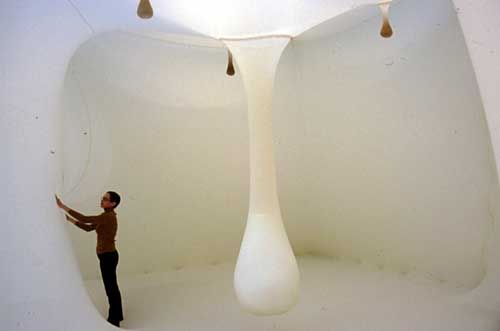
In Search of the Gesamtkunstwerk Experience: Laurie Anderson

Laurie Anderson‘s ‘United States’ book tells the narrative of the total artwork experience that was ‘United States Live’ in a way that informs me of the multiple medias used. As I journey through the pages I take in photographs of the stage sets, performances, instruments, video projections and animations all narrated by the poetry written along side them. It leads me to understand that many medias and art forms are needed to produce a total artwork experience.
This video recording of ‘Home of the Brave’, below, gives me the closest encounter of the experience I could get without being present at the show. Thus the video answers my question of how a total artwork is perceived as I can hear the live audiences’ reaction to the utilization of several different medias at any one time. I can also gauge my own feelings towards the experience, which wasn’t dissimilar to the audiences, one of astonishment and excitement.
Laurie Anderson, Home of the Brave, Zero and One:
In Search of the Gesamtkunstwekr Experience: The Vienna Actionists
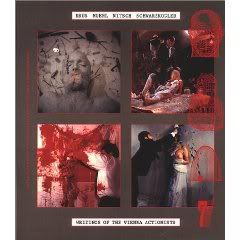
This book answers my question of who, where and when total artworks have been done before. It is well known that total artwork related experiences ignited in the 60s around the globe. This book tells me of the total artwork experiences mainly in Austria and Germany throughout that decade. The artists situation in this movement dictated the total artwork experiences they created: a concoction of spontaneous, blasphemous, sexual and violent shock-art. This leads me to think about how my situation here in Edinburgh at this time effects the total artwork experiences I create. Especially when a Vienna Actionists exhibition in Edinburgh, 1988 was cancelled because some suspected it was considered too shocking for the people of Scotland.
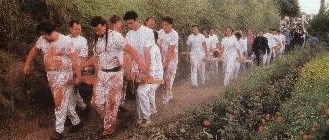
The Action Art of Hermann Nitsche’video shows how these shocking creations also lead onto how a total artwork can be perceived by an audience: “They invade the spectator’s defence mechanism and value systems in a manner comparable perhaps only to the slitting of the woman’s eyeball in Bunuel’s Chien Andalon” (Otto Muhl)
In Search of the Gesamtkunstwekr Experience:
It tells me how artists combined medias together to create total artworks. How many people and the press misconceived their work because of the way they viewed the experiences: more as entertainment or spectacle rather than a serious piece of art.
Looking at this picture, below, I ask myself the question: where have total artwork experiences been held before? I get the answer: everywhere and anywhere that the people involved could use. Street theatre is a simple but very effective way of gaining an audience.
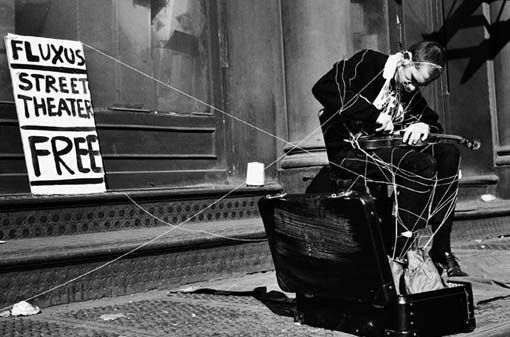
I find Nam June Paik's Head For Zen performance of La Monte Youngs' music piece a totalartwork in itself. It starts off as a music composition, Paik took it into a form of peroformance and the painting outcome was preserved as an object.

In Search of the Gesamtkunstwekr Experience: Throb Club Night
In Search of the Gesamtkunstwerk Experience: tePOOKa
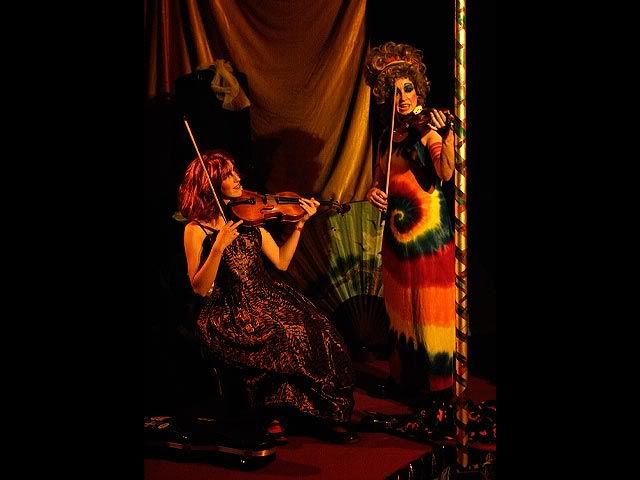
Research: House of COME installation, The Brand New RItual performance and Preacher Man character
Religion is another big influence. I am an atheist who disagrees with many religious beliefs and practices. In a sense this project is going against the traditional religions and creating a new one. I have found relgious symbols and the way leaders or important people are presented. The christian cross has been of great interest to me. Especially due to its simplicity and the fact that it represents the crusifiction of Jesus. Religious buildings have been an inspiration in the making of the House of COME. Again christian churches are referenced because of the impact the bell tower and its point gives, pointing far up into the sky to God.
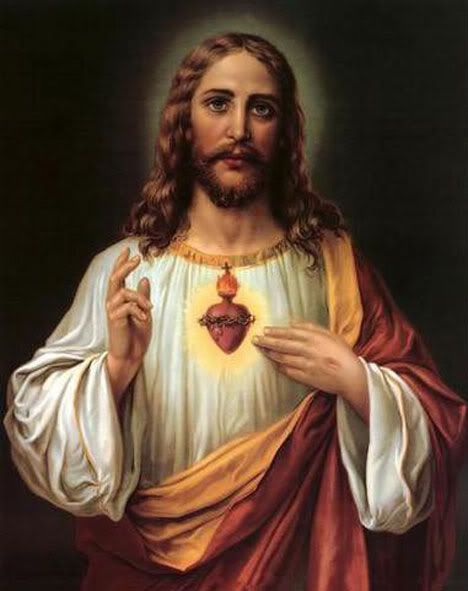
Jesus Christ presented with hand gestures, symbols and halo.
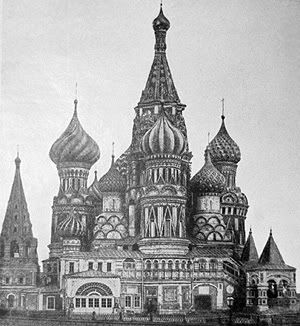
A Russian Church built in the 1600s

This is a picture of the modern DJs Justice and there stage sound system. They are not religious but use the christian cross during their live shows. In a sense they are saying that music is our new religion.
The Chanel 4 comedy Nathan Barley has been another influence in this project. The programme tells of youth culture in the media.
Nathan Barley played by Nicholas Burns is a webmaster, guerrilla filmmaker, screenwriter, DJ and in his own words, a "self-facilitating media node". He is convinced he is the epitome of urban cool, and therefore secretly terrified he might not be, which is why he reads Sugar Ape magazine, his bible of cool. Sugar Ape has been described as a spoof of Dazed and Confused and Vice magazine.
The humour derives from the rapid rise of both the internet and digital television, and the assumption by publishers and broadcasters that almost any such work is worthy of attention. Barley and his peers are often hired ahead of actual journalists and talented writers trying to make intelligent points, such as the earnest documentary film maker Claire Ashcroft, and her brother Dan Ashcroft, a jaded and apathetic hack who, having written an article for Sugar Ape entitled "The Rise of the Idiots", is appalled to find that "the idiots" in question – Nathan and his contemporaries – have adopted him as their spiritual leader, failing to see that they are the very people he was criticising. (excerpt from wikipedia, full article here)
Rise of the Idiots speach:
My own performance speach is based on the Our Father christian prayer but edited with my own beliefs.
I feel the COME collective and my own work can be seen to be created by the "idiots" but I hope people see there is more to the excitement and buzz. Our intent is to open up the arts for everyone to enjoy in a more relaxed setting. It just so happens that the setting can be very exciting and a natural buzz occurs.
To contrast this throw away youth culture I have looked at spiritual pieces of work, mainly by Bill Viola. Viola has influenced my videos throughout the years. I find his work to be completely emersive due to the scale and imagery. His use of the simple, natural and contrasting symbols: fire and water are very affective when evoking emotion. His use of high frame rate slow motion film captures the human emotion in depth. Allowing you to capture every movement of the body, fire and water.
Bill Viola - the Crossing:
Viola's collaboration in the Tristan Project was another big influence on this project and my work in general. Creating a Gesamtkunstwerk or total artwork has been something I have been experimenting on creating with my work and the COME events. In this project I have involved and linked many different medias along with audience interaction and multi sensory experiences. Viola's simple (yet complex) addition to Wagner's Tristan and Isolde shows how technology can evolve an idea. As Wagner said himself he was creating "the artwork of the future".
Viola's Video Projection as part of the Tristan Project:
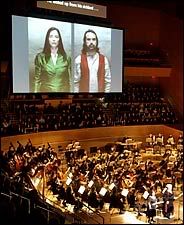
Research: The Master of COME
Which you can read here. These are my notes and some excerpts on the essay, which concluded in a performance called "M.O.C (Master of COME) Me - Slipping Up, In and Out of Character".
"Mostly we only use a small amount of our potential strength and energy to live, but during the 'fight or flight reaction', the body changes the way it operates physically in order to maximise the strength and energy. This reaction is a very powerful response that serves an important survival function, though it is not quite as helpful when we are faced with non-physical threats such as the fear of making mistakes and performing in public. Because these actions do not require physical action (such as running from a threat), we do not use nor absorb the energy the body has given us and we quickly become stressed. "
"Good Evening Ladies and Gentlemen! How is everybody? Good? Splendid!" is always my first line. An always roared first line. I feel expressing these initial words confidently and loudly uses this energy which my body has realesed and brings down my stress levels. The opening line also grabs the audeinces' attention and prepares them for the ensuing speech.
"Cognitive therapies assume that distortions in a person's thoughts and beliefs can lead to a number of problems including anxiety. Becoming aware of negative thoughts and trying to substitute them with more positive thoughts is part of the treatment used in cognitive-behavioural therapy (Steptoe & Fidler 1987). Mentally picturing the situation helps some people overcome their anxiety. Coping imagery can be useful too. If you can anticipate what might go wrong and come up with scenarios where you cope then you are less likely to feel apprehensive. Imagination is a powerful tool and must not be underestimated."
I plan my every word. If someone heckles me or I trip or if anything goes wrong I have back up lines. I have back up lines to back up the back up lines. I practice my speech over and over until i have memorized it. I wear a mask and costume and put on a voice and persona to create a character I can hide behind. I pick on the audience, act dominant and I make sure you're listening.
"Changing both the view of the performing situation and giving positive experiences of performing can reduce anxiety."
The first Master of COME - changing the perfromance from 'The death of painting' to 'Art is Alive!'. a negative subject to a positive subject.
"Confidence and a sense of achievement are the best substitutes for fear or anxiety. It is worth assessing just what the sufferer thinks music making is supposed to be about. Remember the three Cs and the three Es. The 3 Cs - Concentrate, Competence and Confidence. If you concentrate when you practise, this will lead to competence and confidence. The 3 Es - Enthusiasm, Enjoyment and Entertainment. Your audience want to enjoy the performance. If they sense the performer is having a good time then that will encourage them to believe in what the performer is doing."
"There is much fascination with the study of performance anxiety. Performers feel a need to understand this phenomenon if they are to be in control of their body and instrument in performance situations. Musicians agree that performing in public stimulates performance anxiety but how musicians respond varies and that anxiety can help or hinder depending on the intensity of anxiety felt. Anxiety should be seen as a helpful warning that alerts us to possible danger and will allow us to take steps to avoid that which we feel anxious about. Errors made in practice should be viewed simply as ways not to play and not as mistakes. Everything must be kept in context. Patience, persistence, self-awareness and the attitude of self-searching will all help in the control of performance anxiety." (Havas in Grindea 1995).
"With emphasis on relaxation, preparation and self-discovery, anxiety can be controlled. Handling performance anxiety is as much about your attitude of mind as it is about practical solutions. There is no more potent cure for performance anxiety than the knowledge that you can do it. Learning to control our feelings and anxiety through various techniques of relaxation, therapy and the all-important preparation of practise can help us as performers to triumph over performance anxiety."

